Pelegrina exigua
Introduction
Males of exigua can be distinguished from flavipedes and flaviceps by the mostly dark brown legs, the thin retrolateral ramus (Chamberlin, 1925b), and the more twisted prolateral ramus. The black spot on the chelicerae is much broader than in flavipedes. Females of exigua have more strongly convergent epigynal flaps and an extremely broad second curve of the internal ducts.
Figures

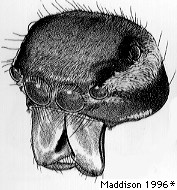 1
1
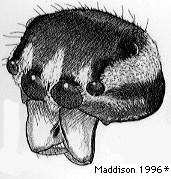 2
2
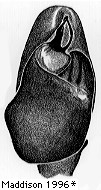 3
3
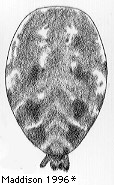 4
4
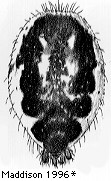 5
5
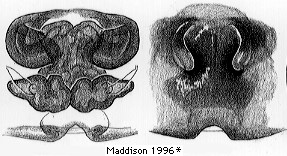 6
6
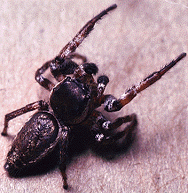 7
7
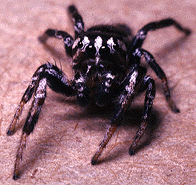 8
8
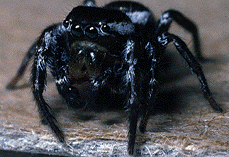 9
9
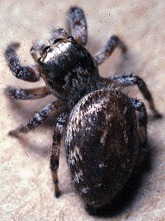 10
10- Male face (dull form)
- Male face (striped form)
- Palpus
- Female abdomen (dull form)
- Female abdomen (striped form)
- Epigynum
- Male (MD)
- Male, striped form (MD)
- Male, dull form (VA)
- Female (VA)
Natural History
Usually found on conifers, known from pines (8 record), junipers (8 record), occasionally on other plants such as oak (1 record) and walnut (2 record).About This Page
* Included on this page are images and text from Maddison, W.P. 1996. Pelegrina Franganillo and other jumping spiders formerly placed in the genus Metaphidippus (Araneae: Salticidae). Bulletin of the Museum of Comparative Zoology. l54(4): 215-368. These images and text are copyright © 1996 The President and Fellows of Harvard College
Page copyright © 1995 Wayne Maddison
All Rights Reserved.
Citing this page:
Tree of Life Web Project. 1995. Pelegrina exigua . Version 01 January 1995 (under construction). http://tolweb.org/Pelegrina_exigua/5056/1995.01.01 in The Tree of Life Web Project, http://tolweb.org/






 Go to quick links
Go to quick search
Go to navigation for this section of the ToL site
Go to detailed links for the ToL site
Go to quick links
Go to quick search
Go to navigation for this section of the ToL site
Go to detailed links for the ToL site